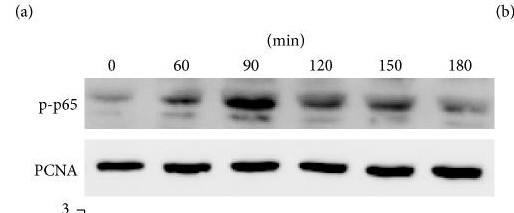PCNA Monoclonal Antibody(12D10), AbFluor 680 Conjugated
- Catalog No.:YM2134
- Applications:WB;IF;IHC
- Reactivity:Human;Rat;Mouse
- Target:
- PCNA
- Fields:
- >>DNA replication;>>Base excision repair;>>Nucleotide excision repair;>>Mismatch repair;>>Cell cycle;>>Tight junction;>>Hepatitis B
- Gene Name:
- PCNA
- Protein Name:
- Proliferating cell nuclear antigen
- Human Gene Id:
- 5111
- Human Swiss Prot No:
- P12004
- Specificity:
- PCNA Monoclonal Antibody(12D10) AbFluor™ 680 Conjugated specially designed for your Immunofluorescence analysis.
- Formulation:
- Liquid in PBS, pH 7.4, containing 0.02% sodium azide as preservative and 50% Glycerol.
- Source:
- Monoclonal, Mouse IgG1
- Dilution:
- Optimal working dilutions should be determined experimentally by the investigator. Suggested starting dilutions are as follows: IHC 1:200, IF 1:200.
- Purification:
- The antibody was affinity-purified from mouse ascites by affinity-chromatography using specific immunogen.
- Concentration:
- 1mg/ml
- Storage Stability:
- Stable for one year at -15°C to -25°C from date of shipment. For maximum recovery of product, centrifuge the original vial after thawing and prior to removing the cap. Aliquot to avoid repeated freezi
- Other Name:
- PCNA;Proliferating cell nuclear antigen;PCNA;Cyclin
- Observed Band(KD):
- 30-33kd
- Background:
- The protein encoded by this gene is found in the nucleus and is a cofactor of DNA polymerase delta. The encoded protein acts as a homotrimer and helps increase the processivity of leading strand synthesis during DNA replication. In response to DNA damage, this protein is ubiquitinated and is involved in the RAD6-dependent DNA repair pathway. Two transcript variants encoding the same protein have been found for this gene. Pseudogenes of this gene have been described on chromosome 4 and on the X chromosome. [provided by RefSeq, Jul 2008],
- Function:
- disease:Antibodies are present in sera from patients with systemic lupus erythematosus.,function:This protein is an auxiliary protein of DNA polymerase delta and is involved in the control of eukaryotic DNA replication by increasing the polymerase's processibility during elongation of the leading strand.,online information:PCNA entry,PTM:Upon methyl methanesulfonate-induced DNA damage, mono-ubiquitinated by the UBE2B-RAD18 complex on Lys-164. This induces non-canonical poly-ubiquitination on Lys-164 through 'Lys-63' linkage of ubiquitin moieties by the E2 complex UBE2N-UBE2V2 and the E3 ligases RNF8 and SHPRH, which are required for DNA repair.,similarity:Belongs to the PCNA family.,subunit:Homotrimer. Interacts with KCTD10. Interacts with PPP1R15A (By similarity). Forms a complex with activator 1 heteropentamer in the presence of ATP. Interacts with POLH, POLK, DNMT1, ERCC5/XPG, FEN1, C
- Subcellular Location:
- Nucleus . Colocalizes with CREBBP, EP300 and POLD1 to sites of DNA damage (PubMed:24939902). Forms nuclear foci representing sites of ongoing DNA replication and vary in morphology and number during S phase (PubMed:15543136). Co-localizes with SMARCA5/SNF2H and BAZ1B/WSTF at replication foci during S phase (PubMed:15543136). Together with APEX2, is redistributed in discrete nuclear foci in presence of oxidative DNA damaging agents. .
- Expression:
- Bone marrow,Fetal brain cortex,Lung,Placenta,
- June 19-2018
- WESTERN IMMUNOBLOTTING PROTOCOL
- June 19-2018
- IMMUNOHISTOCHEMISTRY-PARAFFIN PROTOCOL
- June 19-2018
- IMMUNOFLUORESCENCE PROTOCOL
- September 08-2020
- FLOW-CYTOMEYRT-PROTOCOL
- May 20-2022
- Cell-Based ELISA│解您多样本WB检测之困扰
- July 13-2018
- CELL-BASED-ELISA-PROTOCOL-FOR-ACETYL-PROTEIN
- July 13-2018
- CELL-BASED-ELISA-PROTOCOL-FOR-PHOSPHO-PROTEIN
- July 13-2018
- Antibody-FAQs

